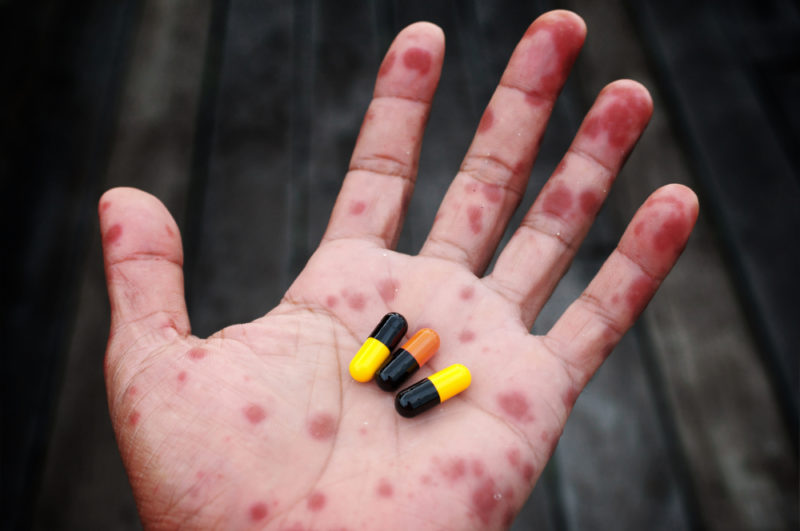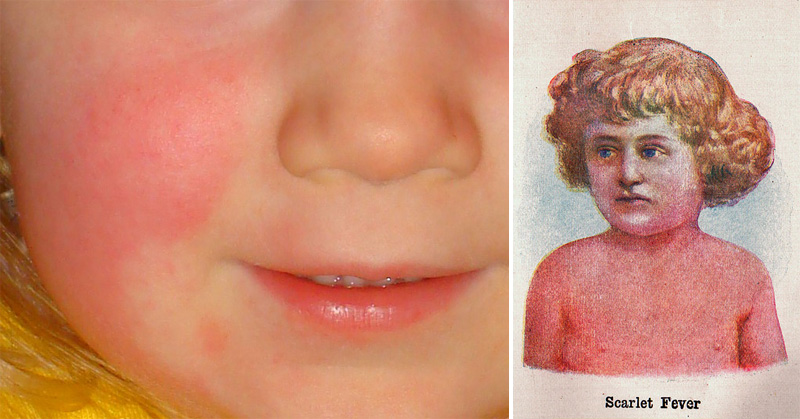When your child gets sick, the thought that it might be Scarlet fever probably never enters your mind. Scarlet fever might have been a thing of the past, but not anymore. The illness has become more common in the past few years, thanks to a new aggressive strain.
What Is Scarlet Fever?
Scarlet fever is a bacterial illness. It develops in some people who have strep throat. It causes a bright red rash that covers most of the body, accompanied by a sore throat and a high fever. Scarlet fever is caused by group A strep bacteria, which can live in a person’s nose and throat. It’s spread through contact with an infected person’s cough or sneeze. If you touch your nose, mouth or eyes after touching something an infected person has cough or sneezed on, you can contract the illness.

Scarlet fever is most common in children ages 5-15, which makes it extremely important to know and recognize the signs and symptoms. Antibiotic treatments have made Scarlet fever less threatening, but if it’s left untreated, the illness can result in more serious conditions that affect the heart, kidneys and other parts of the body.
Common Symptoms Of Scarlet Fever
- A very red, sore throat
- A fever of 101 or above
- A red rash that feels like sandpaper
- Bright red skin in underarm, elbow and groin creased
- A white coating on the tongue
- A red and bumpy tongue
- Headache or body aches
- Nausea, vomiting or abdominal pain
- Swollen Glands
Treating Scarlet Fever
Scarlet fever can be treated using antibiotics, but antibiotic use should always be approved by a health care professional. If your child has a sore throat, ask you doctor about getting a strep test. If your child tests positive for group A strep, your doctor will prescribe antibiotics that will speed up the healing process and protect others from getting sick.

While antibiotics can help, all medications have side effects. It’s important to watch your child closely for any negative side effects caused by the antibiotics.
Common side effects with antibiotics include:
- Rash
- Soft stools, diarrhea
- Upset stomach
- Fungal (yeast) infections such as thrush
- Severe allergic reaction that results in difficulty breathing and facial swelling
Treating Scarlet Fever Symptoms Naturally
If your child develops Scarlet fever, they will experience some severe discomfort. There are several natural remedies you can use to help ease their symptoms.
- Apple Cider Vinegar – ACV has the ability to heal a sore throat by warming it up and adding some cayenne pepper. The acetic acid can help treat infections.
- Lavender Oil – The linalool in lavender oil can reduce Scarlet fever symptoms by moisturizing the dry and itchy rash. Add 2% of a carrier oil like olive or almond oil to treat the rash.
- Water – It’s important to stay hydrated while sick. Drinking plenty of water can help soothe a hoarse or scratchy throat.
- Honey Lemon Tea – Warm honey lemon tea can help soothe the throat while providing the body with antibiotics to boost the immune system.
Sources:
The Hearty Soul
Mayo Clinic
Centers for Disease Control and Prevention
Drugs
Mayo Clinic


